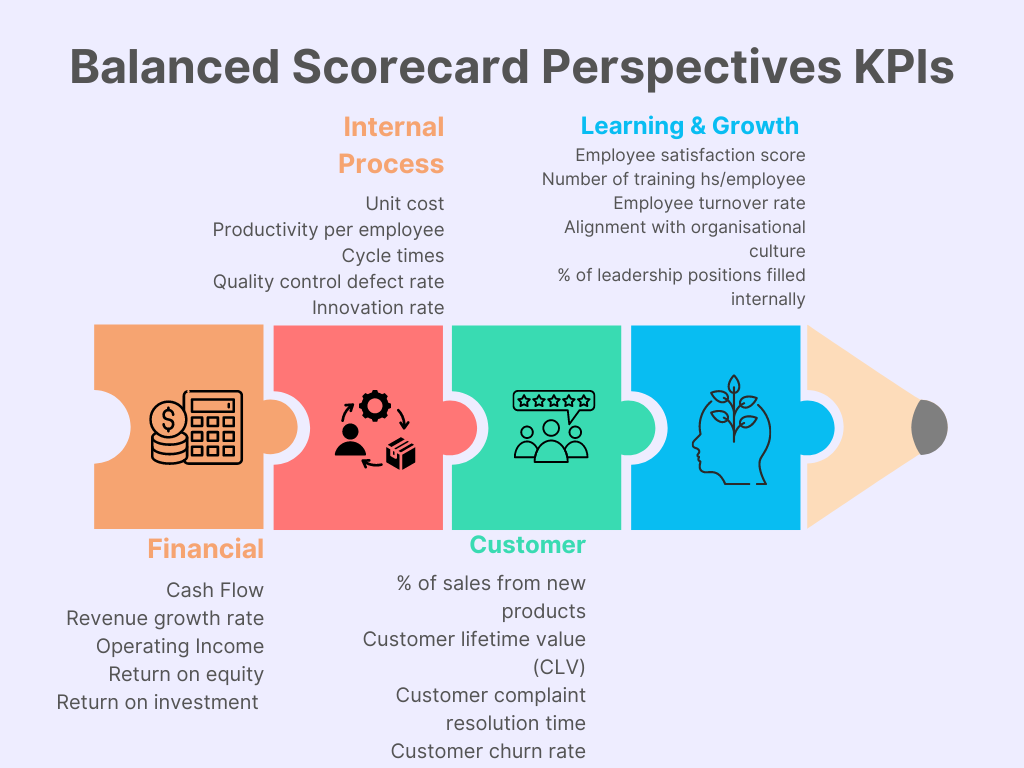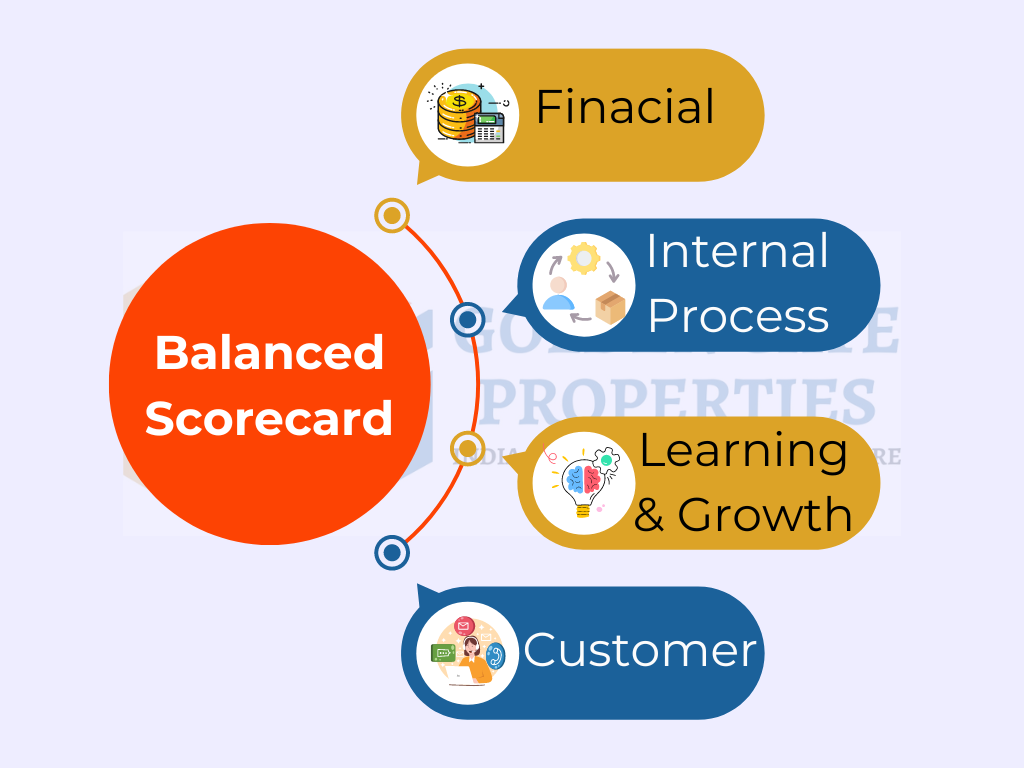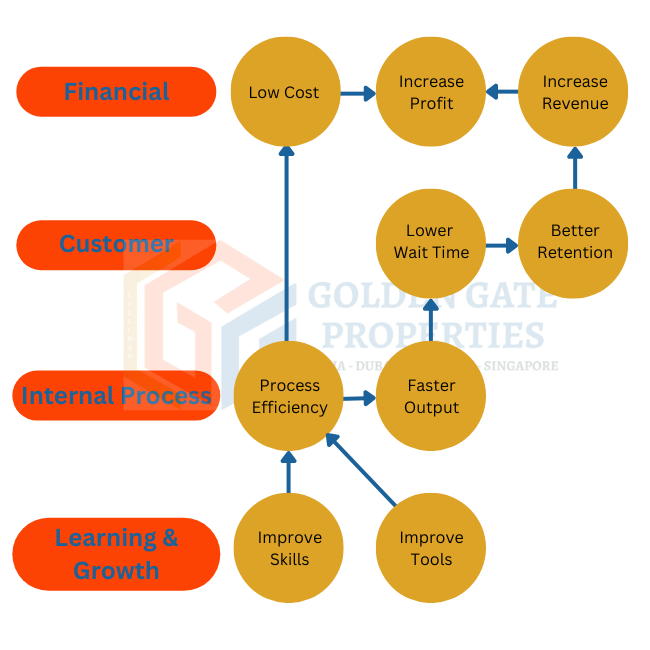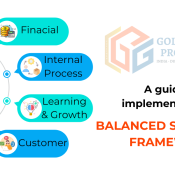
A Guide To Implementing The Balanced Scorecard Framework
Despite being one of the most successful planning tools, the Balanced Scorecard (BSC) often remains unused or misunderstood.
Consequently, many strategy executives struggle to affect the organization’s performance or swiftly alter company plans to changing situations.
In this essay, we’ll present a full guide to the balanced scorecard framework, covering:
- Key Benefits of the Balanced Scorecard
- Debunking a prevalent myth for improved outcomes.
- How to Implement a Balanced Scorecard
- How to utilise a balanced scorecard for strategy tracking and execution.
So, what exactly is a Balanced Scorecard? Let us dig in. 👇
What is a Balanced Scorecard?
The Balanced Scorecard, a well-known strategy framework developed by Robert Kaplan and David P. Norton, was published in Harvard Business Review in the 1990s. Since then, it has been utilised by hundreds of firms and is a mainstay in business and strategic management courses.
The Balanced Scorecard serves as a management framework, supporting firms in aligning strategic efforts with operational objectives and enhancing corporate performance. This approach emphasises the establishment of Key Performance Indicators (KPIs) in four crucial areas to enable quicker and more effective decision-making.
What are the four perspectives on a balanced scorecard?
The Balanced Scorecard (BSC) divides its strategic approach into four important areas: financial, customer, internal business process, and learning and growth. Each plays an important part in ensuring a comprehensive perspective of organisational performance.

Financial perspective
In this perspective, financial performance measurements reflect if an organization’s strategy and execution are advancing its financial goals. Typical scorecard financial metrics include:
- Cash flow
- Revenue growth rate
- Operating income
- Return on equity
- Return on investment
Customer perspective
This perspective should focus on measures that deliver value to the customer. These scorecard metrics can include:
- % of sales from new products
- Customer lifetime value (CLV)
- Customer complaint resolution time
- Customer churn rate
- Net promoter score (NPS)
Internal business process perspective
In this perspective, prioritize internal metrics that impact customer satisfaction most. Optimizing these metrics ensures operational improvements that boost performance from a customer and financial perspective. This would include measuring things such as:
- Unit costs
- Productivity per employee
- Cycle times
- Quality control defect rate
- Innovation rate
Learning and Growth Perspective
This section of the balanced scorecard focuses on KPIs that promote continual development, innovation, and learning. Examples of metrics are:
- Employee satisfaction scores
- Number of training hours for each staff
- Employee Turnover Rate
- % percentage of leadership positions filled internally
- Alignment with organisational culture: proportion of senior posts filled internally.
Benefits of Implementing a Balanced Scorecard
The four views of the Balanced Scorecard serve several functions.
They guarantee that the most important success factors, such as customer happiness and operational efficiency, are prioritised.
They compel organisations to give tangible measures to each perspective, which improves accountability.
They serve as a management framework for conveying the organization’s strategy to stakeholders. For example, ‘We are doing x because it helps us achieve in the Customer viewpoint of our scorecard.
They assist in identifying competitive advantages and opportunities for development.
According to a 1997 Institute of Management Accountants research, 64% of US corporations employ the Balanced Scorecard. According to Bain & Company’s 2023 poll of 1,000 leaders and managers, this tendency continues today.
Interestingly, many of our strategy execution platform customers unintentionally agree with its concepts, demonstrating its intuitive appeal. When we discuss the Balanced Scorecard with them, we frequently learn that they are ignorant of its implementation.
However, they naturally concluded that their efforts and measures should focus on the same four viewpoints as the Balanced Scorecard.
The final benefit is a sharper emphasis on leading and lagging KPI indicators, ensuring a balanced approach to short-term and long-term objectives.
Issues With Balanced Scorecard Implementation
Like any other prominent strategy framework, the Balanced Scorecard has received some criticism. The primary objections to the Balanced Scorecard focus on the following:
- Setting up is time-consuming.
- Complexity leads to misunderstandings.
- Rigidity amidst changes in the corporate environment.
- Overemphasis on financial metrics.
- Neglecting external market dynamics.
Despite criticism, understanding the Balanced Scorecard’s strategic depth—beyond reporting—provides considerable organisational benefits.
People believe in the Balanced Scorecard as four viewpoints into which you can slot your strategic goals. When they envision the Balanced Scorecard, they conceive of it as this diagram:

This picture depicts how four simple views work together to create a Balanced Scorecard. Each viewpoint has Strategic Objectives, Projects, and KPIs you must accomplish.
The purpose is to achieve a balance of perspectives and increase organisational effectiveness.
This conventional approach believes that each perspective is independent of the others. Nonetheless, this method for adopting the Balanced Scorecard is inherently incorrect.
After years of trial and error, it turns out that how we organise them is important. The current balanced scorecard indicates how each perspective adds to the preceding one.
The fact is that good implementation while maintaining the sequence of viewpoints, converts BSC into an unrivalled tool for strategy alignment and performance improvement.
The Proper Way to Implement the Balanced Scorecard
The proper application of the Balanced Scorecard begins with addressing the diagram from the bottom up, guaranteeing a strong foundation for each successive layer.
Consider the Balanced Scorecard a strategic map, with each stage, beginning with Learning & Growth and progressing gradually to the ultimate aim of greater profitability.

There is also another way to look at it.
The Balanced Scorecard, like leading and lagging KPIs, consists of leading and lagging viewpoints.
Learning and Growth, Internal Processes, and Customer will be your leading perspectives since they help to provide your core lagging perspective: financial performance. It is called ‘lagging’ because it is caused by activities made in the other three viewpoints.
This profit-centric attitude, however, attracts examination. Critics highlight possible incompatibility with organisations such as charities, government bodies, and innovators like Google and Meta, whose aims go beyond financial gains.
These organisations seek innovation, user experience, and social or environmental responsibility goals that a profit-driven framework like the Balanced Scorecard may only partially support.
How to Use This Approach to Implement BSC
Begin your BSC installation journey with practical measures intended to drive performance:
Examine your present business performance utilising key business KPIs.
Identify and resolve barriers and hazards from each BSC perspective.
Prioritise business operations in the order in which they must be completed to ensure the quickest movement through the phases.
Create a strategic roadmap for closing the present and desired state gap.
Determine the cause-and-effect links between various strategic objectives.
When mapping dependencies, examine how a company’s ability to learn and grow influences its ability to manage internal operations. Refining your internal procedures not only improves customer service and lowers costs, but also sets the foundation for increased sales.
This direct impact on your bottom line demonstrates how strategic enhancements lead to achieving broader financial objectives, a testament to the BSC’s efficacy.
Balanced Scorecard for Strategic Planning
One of the most effective ways to use the Balanced Scorecard is within your strategic planning process.
This is the first and most important stage in establishing a Balanced Scorecard approach, and it will serve as the foundation for everything your organisation does in the future.
Here’s how you deploy the Balanced Scorecard from a strategic planning standpoint with Cascade in two steps:
Step 1: Use Focus Areas as your viewpoints
This Balanced Scorecard implementation process entails aligning your whole strategy plan around the Balanced Scorecard. You will designate each viewpoint as a strategic focus area, and then align Objectives, Projects, and KPIs exactly beneath it. You’ll finish up with a strategy plan that looks like this.
Step 2: Include objectives, projects, and KPIs for each perspective.
The implementation does not end with the creation of your focal zones. You must ensure that each of your opinions includes a decent balance of:
Strategic objectives (overall outcomes).
Projects (Specific efforts)
KPIs (metrics of success).
Balanced Scorecard for strategy tracking
Moving on from strategic planning to strategy tracking, consider adopting a Balanced Scorecard for performance management and progress monitoring.
This is an essential component of every strategy implementation. You must incorporate your Balanced Scorecard into governance by including it in weekly team meetings and board reports to ensure ongoing strategy alignment and progress.
Balanced Scorecard, Strategy Planning, and Execution Team
Are you intrigued by the Balanced Scorecard approach? Enhance your strategic efforts with a strategy execution platform that simplifies planning and implementation.
GGP specialises in bringing your Balanced Scorecard to life. It delivers a consistent approach to strategic management and unified solutions that increase responsibility, encourage alignment, and drive measurable business results.



